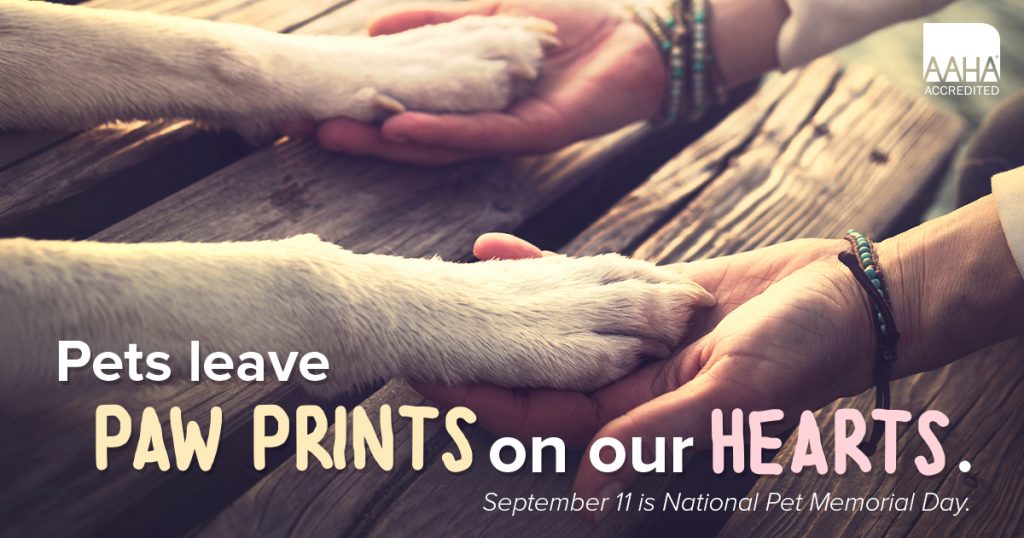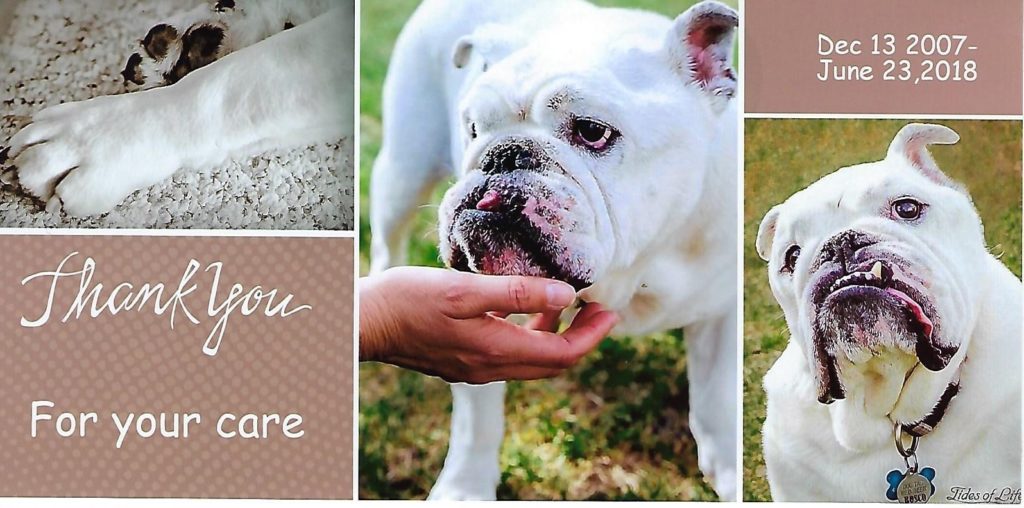
The hardest part of loving a pet is having to say goodbye. For so many of us, pets are more than animals that live in our homes—they’re family. Deciding how to handle a beloved cat or dog’s final life stage—their last hours, days, weeks, or months—can be extremely challenging.
As both animal lovers and medical professionals, veterinary teams want to support you when it’s time to make end-of-life decisions. That’s why AAHA collaborated with the International Association of Animal Hospice and Palliative Care to create the AAHA/IAAHPC End-of-Life Care Guidelines.
Click here for: Top 12 things you should know about AAHA’s End-of-Life Care Guidelines
Answers to Commonly Asked Questions About Euthanasia
(The following information is found in the Pawsitive Resources “Preparing to say goodbye to your pet” brochure.)
How will I know when it is the “right time” to say goodbye to my pet?
This is never an easy decision. However, there are some signs that can help you decide when the time has come. It is important to work with your veterinarian to fully understand the disease or injury that is responsible for your pet’s ailing condition. The following are some questions to consider asking your veterinarian:
- Do I have all the information about my pet’s condition?
- Are there other options for treatment or care such as a specialist or referral institution?
- Does my pet have any chance to recover, improve or at least maintain a good quality life?
- How is the disease/injury likely to progress?
- How much time does my pet have to live a good quality of life while coping with this illness or injury?
How can I tell if my pet still has a good quality of life?
Generally you can assess quality of life based on your perception of changes in the following:
- Attitude– Does my pet still enjoy doing most of the activities he/she used to do? Have there been changes in how my pet interacts with other family members?
- Appetite– This is often a big indicator . Does my pet still enjoy eating or have a good appetite? Most often, once your pet consistently loses interest in food, the quality of life has diminished.
- Activity – Does my pet seem in extreme pain or reluctant to get up and move around? Is he/she able to go outside or to the litter box to urinate or defecate on his/her own?
Discuss your perception of these and other factors with your veterinarian to determine the cause of the decrease in quality of life. Some behaviours that pets display are commonly viewed as “normal aging”. Your veterinarian can help determine if this is the case.
Bi-annual examinations for senior pets can help to prevent or manage certain diseases, as well as aid in seeking options for palliative care. There are various treatments, diets and medications available from your veterinarian that may improve your pet’s quality of life. Age itself is not a disease, nor a reason for euthanasia.
How can my family and I best prepare to say goodbye?
Take the time to consider:
- Which veterinarian would you like to perform the euthanasia?
- Who in your family would like to be present, if anyone?
- What aftercare options are available for your pet?
Taking some time to consider these issues will help you and your family be more at ease during your pet’s euthanasia and will also help facilitate the grieving process.
Whether or not you and your family choose to be present at the time of euthanasia is a personal decision. However, it is important for all family members to have a chance to say goodbye whenever possible. You also have the option to visit your pet after euthanasia, which may help provide closure. Many people avoid this heartbreaking goodbye but often regret it later. Take time to make the goodbye special. For example, go to a favorite location such as a park or just spend time together even if this means visits to the veterinary hospital. Your veterinarian can best advise you about visitation and the amount of time spent with your beloved pet.
What happens during the euthanasia of a pet?
Euthanasia is a term meaning painless death. For an individual animal, it means an intravenous injection of a high dose of barbiturate. Your veterinarian or veterinary technician may first place an intravenous catheter into a leg vein, and your veterinarian may also recommend sedation. The act of euthanasia occurs within seconds. Your veterinarian will confirm that your pet has passed away by listening to the heart with a stethoscope. Even after death, you may notice your pet twitch, gasp, urinate and/or defecate. These are normal releases after a body has expired. The eyes may remain open after death.
What happens to my pet’s body after euthanasia?
Rest assured that your pet’s remains will be handled gently, with dignity and respect. The body will be kept safe at an appropriate temperature until a designated cremation service arrives to provide for proper cremation.
What options do I have about aftercare for my pet?
There are several aftercare options available for your pet. The deceased pet can be cremated and the cremated remains returned to you, sealed in an urn. There is also group cremation where the pet is cremated and buried with other beloved pets. Some areas have local pet cemeteries. You can check with local government regulations about pet burial laws. Discuss keepsakes with your family and veterinary staff. For example, some people wish to keep a piece of fur or make a clay paw print impression of their pet.
Are there any resources or suggestions to help my family and me with the grieving process?
There are many services and resources available to support you and your family through the grieving process. There are pet loss support lines, pet loss support groups, books for adults and children on grieving and pet loss, and individual grief counselors who specialize in pet bereavement. Engaging in family activities such as planting a tree or flowers in the yard to commemorate your pet; scrap-booking or writing about special memories of your beloved pet may help you and your family to express your emotions and facilitate the grieving process. Remember that grief is normal and you are not alone. Do not hesitate to seek support if you feel it may assist you and your family.
Your veterinarian and staff members are here to help and support you with this decision. Please do not hesitate to ask them to address any questions or concerns you may have.


